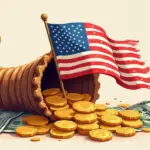In FED we trust
D. Wessel, In FED we trust: Ben Bernanke’s war on the Great Panic, Crown Business, 2009.
Confesso, non ho mai sostenuto l’esame di politica monetaria. Sono stato solo un anomalo studente di giurisprudenza. Tralasciamo i perchè dell’anaomalia. Come giustamente sostiene Oscar Giannino avrei ben pochi titoli per segnalare qualcosa sulla Federal Reserve. Mi limiterò al gossip.
Sanford Levinson recensisce su Balkinization il nuovo libro di David Wessel (WSJ). Perchè il libro è interessante? Wessel ci fa entrare nei giorni della crisi e nelle stanze dove sono state prese le decisioni per affrontarla. Levinson mette in evidenza due cose. Prima si concentra sui poteri della FED:
Even if Paulsen was playing a role (often quite an unhelpful one), the ostensible President of the United States, one George W. Bush, was entirely irrelevant to most of the events Wessel describes, as was, by and large, Congress, at least until the sums of money became so completely gigantic that Congress had to authorize them.
Wessel entra nella psicologia dei personaggi che, dalla stanza dei bottoni, decidevano il da farsi. La weltanschauung di quei giorni era quella del “Whatever it takes“. Pronti a far tutto pur di portare a casa il risultato. Scrive Levinson:
The second point is perhaps of even more immediate concern to lawyers, for Wessel’s recurrent mantra, always in italics is whatever it takes. This describe Bernanke’s determination that the slide toward another Great Depression, if not worse, not take place on his watch and his concomitant willingness to do “whatever it takes” to avoid that. Thus the invocation of a hitherto obscure 1932 law–and the fact that it was passed in 1932 is of independent interest, since that obviously precedes FDR’s coming to power–that authorized the Fed to do a variety of amazing things in “unusual and exigent” circumstances. One might well regard this as an example of “delegation run riot,” at least in traditional terms. But Wessel notes that even that law wasn’t an out-and-out blank check, and that it required some creative lawyering and jerry-rigging of institutional structures to justify what was done. “Seeing imminent danger to the financial system, Bernanke and the New York Fed’s Tim Geithner had no choice but to improvise….” (p. 148, emphasis added). Indeed, to quote from the concluding chapter, “they stretched law to do whatever it takes to protect the system from clear and present danger” (p. 274, first italics added).
E qui Levinson affronta il problema della “constitutional dictatorship“. Ma questo è un esercizio di stile per poveri giuristi.












